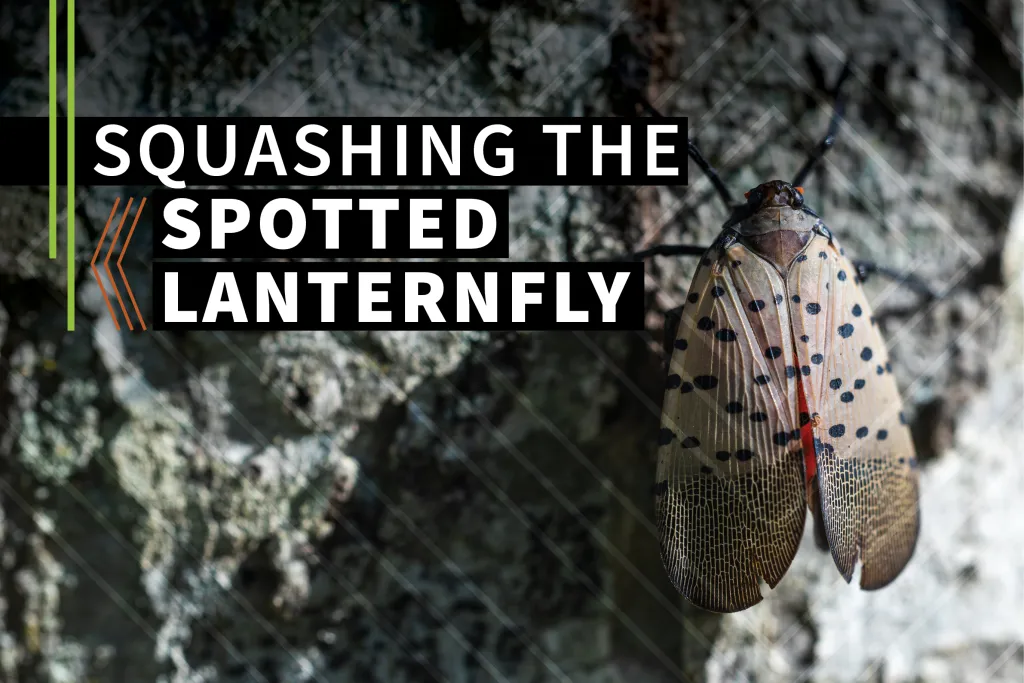The U.S. Department of Agriculture (USDA) is working with states to detect, contain, control and suppress spotted lanternfly, a deadly nonnative invasive pest that threatens American agriculture and natural resources.
The Spotted Lanternfly (Lycorma delicatula) is native to China and was first detected in North America in September 2014 in Berks County, Pennsylvania, according to USDA’s Animal and Plant Health Inspection Service. Subsequently, USDA confirmed spotted lanternfly infestations in Virginia, New Jersey, Delaware and Maryland. USDA also confirmed a single dead spotted lanternfly detection in New York and Massachusetts.
Spotted lanternfly feeds on a wide range of fruit, ornamental and woody trees, and can be spread long distances by people who move infested material or items containing egg masses. If allowed to spread in the United States, this pest could seriously impact the country’s grape, orchard and logging industries.
With support from USDA’s National Institute of Food and Agriculture (NIFA), researchers and Extension educators at Land-grant Universities are playing a critical role in conducting research and educating growers, producers, landowners, forestry personnel and the public about the need to be on the lookout for this pest.
Penn State University has been at the forefront of research and outreach about the spotted lanternfly and its impact on the state’s $4.8 billion grape and wine industries. Economists with Penn State’s College of Agricultural Sciences said if not contained, the spotted lanternfly could drain Pennsylvania’s economy of at least $324 million annually and cause the loss of about 2,800 jobs.
Researchers and Extension educators affiliated with the Lake Erie Regional Grape Research and Extension Center and Penn State's Fruit Research and Extension Center in Biglerville are working to understand the pest's potential to cause pandemonium in vineyards. In 2018, they established a satellite research site at Manatawny Creek Vineyard in Berks County.
Over two growing seasons, they documented how feeding damage caused by the insect affects grapevine health and the quality and quantity of the fruit. The team believes information gleaned from this study will be helpful for growers when making decisions about pest-management strategies.
NIFA-funded researchers also studied the population genetics of spotted lanternfly in Pennsylvania. Identifying novel genetic markers and genotyping the insect can help in the effort to more precisely pinpoint the Asian origin of the lanternfly invasion and to geographically narrow the search for natural predators and parasitoids.
In 2020, Virginia Cooperative Extension launched a comprehensive spotted lanternfly outreach effort. Specialists and agents spoke throughout the state, regionally, and nationally about spotted lanternfly to raise awareness and to slow the spread of this invasive insect. Seventy-eight presentations were delivered to more than 2,700 people. As a result of the outreach and volunteer monitoring, more than 1,300 reports of the spotted lanternfly were made across 37 counties. Reports and scouting led to one new county population discovery along with multiple transportation intercepts throughout the state.
Following a spotted lanternfly presentation, one middle school youth commented “I learned that their egg masses have 20-30 of those bugs. And that the male has a black thing on its bum and the female has a red thing on its bum. I also wanted to tell you that I have killed 30 bugs.”
University of Delaware Cooperative Extension produced a podcast about the spotted lanternfly as part of a 13-episode podcast season in 2020 in an effort to reach citizens during the pandemic. Extension302 offered unbiased scientifically based conversations featuring guest experts. The podcast season was listened to 2,934 times, with the spotted lanternfly episode the second most popular show with 530 listens.
Ohio State University Extension’s Ohio Woodland Stewards Program workshops on nonnative invasive species have trained nearly 2,600 natural resource professionals and over 9,800 landowners about the spotted lanternfly. And a smart phone app developed by Ohio State is being used by citizen scientists and professionals to track Ohio’s new invasive insect threat.

